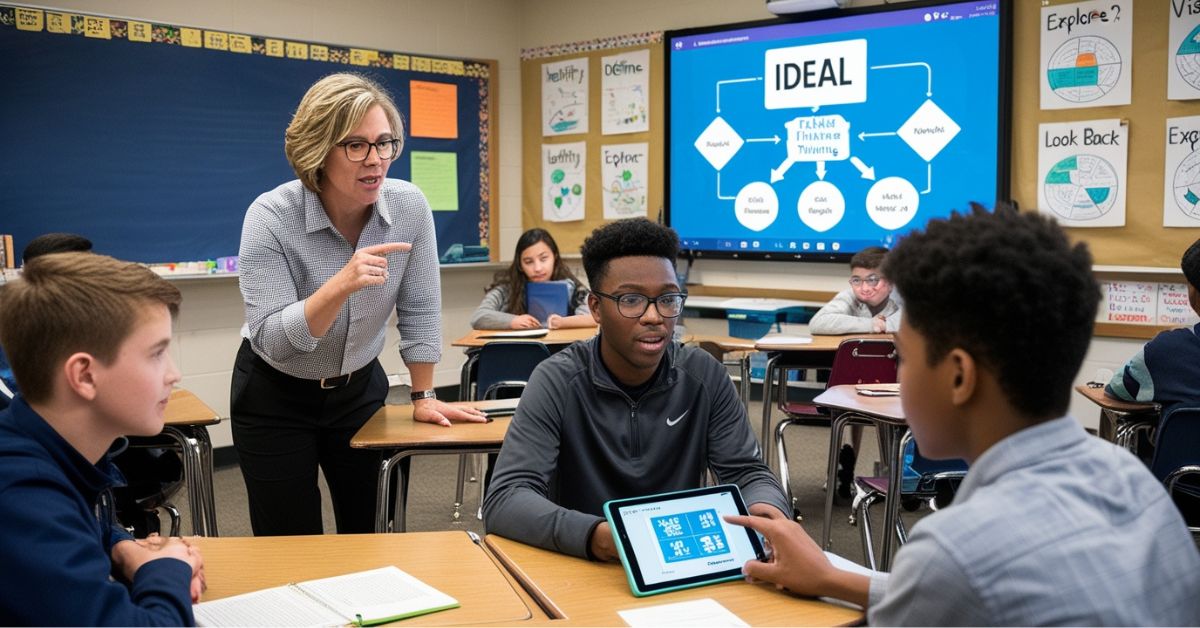The Role of Teacher Empathy
Teacher empathy refers to a teacher’s effort to understand students’ social and personal circumstances. They care for them and are concerned when they experience pleasant or bad emotions. They should show compassion without losing sight of the importance of the student’s education. The empathetic teacher is selfless, caring, kind, and pleasant. They recognize each student’s worth and value and promote tolerance. They want to like and be liked by their students. They seek out opportunities to interact with students whenever possible.
Creating a Safe and Welcoming Atmosphere
An empathic teacher creates a safe and welcoming learning atmosphere in which pupils feel appreciated and understood. They actively listen to their students’ issues, emotions, and points of view, thereby establishing a secure environment for open discourse. Their genuine compassion enables them to relate to individual hardships and celebrate accomplishments, fostering a sense of connection among students.
Adapting to Diverse Learning Styles
Empathetic teachers modify their teaching approaches to accommodate different learning styles, thereby supporting each student’s growth journey. They understand that obstacles are part of the learning process and provide support and advice to overcome them. Finally, an empathic teacher inspires their students to attain their greatest potential with confidence and self-assurance.

The Importance of Empathy in the Classroom
An empathic teacher is essential in the classroom because he/she creates a good and nurturing learning atmosphere. They recognize and acknowledge their kids’ different needs and emotions, establishing a sense of belonging and trust. Empathy enables them to interact with students on a more personal level, thereby aiding their intellectual and emotional development.
Impact on Student Engagement and Well-being
Students are more likely to actively participate in the learning process when they feel understood and respected, which leads to higher academic performance and overall well-being. An empathic teacher also assists in the resolution of conflicts, encourages tolerance, and instils vital life qualities such as compassion and understanding in pupils, preparing them to succeed in an interconnected world.
The Value of Empathy in Teaching
Empathy is a valuable skill and tool. Every teacher should learn and put it into practice. Good teachers understand how a student’s inner feelings are reflected in his/her facial expressions. Empathy in a teacher helps in the development of meaningful connections with his students.
Positive Interaction with Students
Empathic teachers will interact with students before and after class, at break time, at lunchtime, and after school. They foster an informal environment for communication and support. They will look for ways to help students reach their full potential. They will treat students with concern, respect, and fairness in order to elicit the best performance from them.

Taking Responsibility for Students
Empathic teachers are concerned about their student’s well-being and academic progress. They find solutions to the problems of their students. They are vigilant and pay close attention to students.
Opportunities for Collaboration
They provide opportunities for group projects and teamwork within the institution. They can enable students to collaborate and provide motivation to win or lose activities. Such activities foster a sense of community and help to forget about their concerns.
Building an Empathic Classroom Culture
Each classroom has its own culture, which can be established at the start of the session. Each student is unique. Small activities that end with empathy lessons should be carried out. This fosters empathy and the formation of friendships among students.
Knowing Themselves as Educators
Teachers should understand the value of being themselves, being human, being reachable, and showing genuine affection outside of the classroom. This self-knowledge helps these teachers to make good emotional and academic decisions and comprehend the minds of children.
Conclusion
Teacher empathy is an important tool that extends beyond the classroom experience itself; it shapes the environment around it so that trust and connection become part of the experience, and control and collaboration become the environment. To a teacher who has an authentic understanding of students’ emotions, challenges, and aspirations, a learning environment starts to emerge. An empathic teacher goes beyond students’ academic learning to care about students’ personal growth and well-being.
The empathic teacher implements strategies for calibrating to students’ ecologically and culturally relevant learning practices, engages in authentic content learning opportunities, takes self-responsibility for the learning outcomes for the students, and increases the students’ self-assurance and motivating force for self-discovery and learning. Moreover, empathy builds relationships and engagement and contributes to a culture of collaboration and inclusiveness. Likewise, empathy builds life skills of compassion, tolerance, and resilience so that students can thrive beyond the classroom space. Empathy is not simply a teaching tool; it cultivates an ethical disposition that goes beyond pedagogy and critically distinguishes extraordinary from ordinary teachers. Every teacher must strive for and develop empathy because it can and will change students’ work and lives.
You may also like to read:-
How Technology in Education is Transforming Modern Classrooms
Characteristics of a Good Principal: What Makes a Great School Principal?
Teachers as Role Models: Simple Ways and Strategies
- How to Dominate Your Online Business With 5 Proven Digital Marketing Strategies
- How to Cultivate Critical Thinking and Problem-Solving Skills in Classroom
- Top Proven Mental Health Strategies for Schools in 2025-26
- Time Management for Teachers: How to Plan, Prioritize, and Perform Better
- How Parental Involvement in Education Shapes a Child’s Growth and Success
FAQ’S
1. What is the meaning of an empathetic teacher?
Empathy within a teacher refers to the ability to comprehend the students’ social and personal situations and accept them unconditionally while aiming at a student’s academic and personal progress to apply suitable and diverse learning methods.
2. Why is empathy important in teaching?
When the teacher fully understands the child this leads to improvement in academic achievements, emotional development and social relationships.
3. What are some examples of empathy in the classroom?
Some examples of instructional strategies include; giving students consideration about the matters that they are discussing in class, altering instructions for students based on the learning mode, encouraging students who are overwhelmed by the class work, and also encouraging the students to work in groups.
4. How can teachers cultivate empathy in the classroom?
There are many ways in which teachers can promote empathy: through positive interaction with students, with their involvement in teaching empathy activities such as role-playing or journaling, and most especially, through class culture.
5. What is the importance of empathy in students’ lives?
Empathy makes it easier for learners to understand other people’s feelings; figure out ways to solve disputes; respect other points of view; and establish interdependence with others in the society for the purpose of enhancing relationship skills in a global society.



